Salvete Amici,
According to most depictions gladiator belts were about 8-12cm wide [1], often metal-reinforced leather belts (Balteus/Cingulum) [2]. Figure one shows the bronze fittings of a leather belt from the 4th century BC. The holes all around the belt show how it was fastened to the leather with simple yarn. These armour belts can be traced back to the Iron Age and were adopted by the Romans in the course of the gladiation of their subjugated enemies.
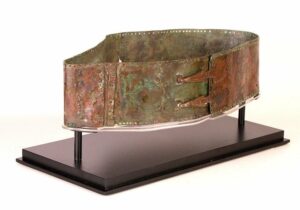
Fig.1. belt remnant Samnite 4th century BC
In comparison, the Roman military belt, here after finding in Tekija(Serbia). Which was to influence the belt more and more during the gladiation. (spoiler)
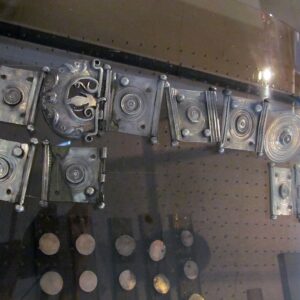
Fig.2 Cingulum Militare [2]
The smooth leather design can also be seen in many pictures. See Fig. 3-5 for an example.
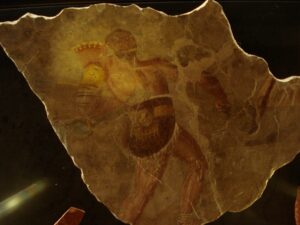
Fig. 3 Fresco Retiarius
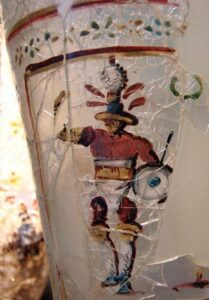
Fig. 4 Vase Belgram Hoplomachus
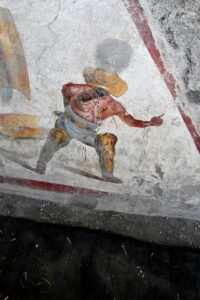
Fig. 5 Fresco Pompei Thraex
Here, smooth, barely decorated belts with the same reinforcing bronze band are shown.
In figures six and seven, one can see decorated or misted-up bronze bands on carrying leather or misted-up leather.
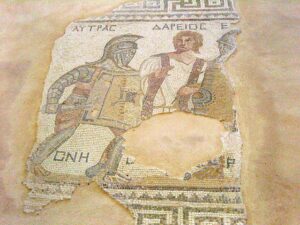
Fig. 6 Mosaic Kourion Thraex
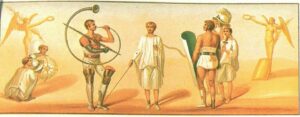
Fig. 7 Fresco Pompei Hoplomachus
I would like to call the openwork decoration the third type of construction. This could be created by several individual metal plates, similar to the military model. See also Figure eight.
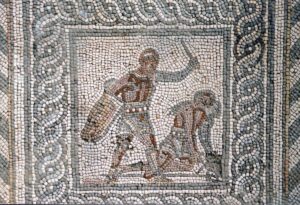
Figure 8 Basel Secutor mosaic
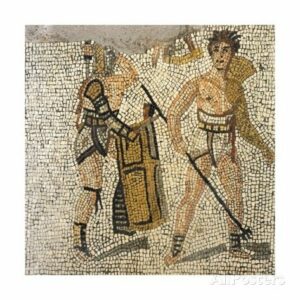
Fig. 9 Mosaic Villa Negrar Retiarius
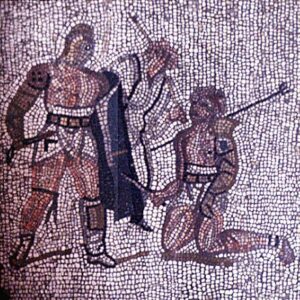
Fig. 10 Mosaic Villa Negrar Secutor
Here you can clearly see individual structures with interruptions on a carrying belt. A fabric belt would be unsuitable for this use, so we have chosen a 1.2mm thick cowhide belt as a carrier material for our equipment reconstruction. This is closed with two buckles.
The width can be assumed in the pictures as often uniform, but in the later years of the imperial period, the belt became wider. From the finds and the depictions we have chosen a belt of 11cm width.
From the helmets from Pompeii we know that the chosen decorations told little stories or episodes [3].
Therefore we chose three motifs for Pullus, which depict his gladiatorial development and hammered them on bronze plates. After the first fight he was the newly hatched gladiator chick (fig. 11). Hence the Roman numeral one in the broken egg. After that 19 more fights followed and he became the proud cock (Pullo) with the Roman numeral twenty.
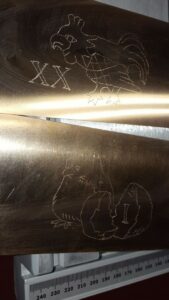
Fig. 11 Bronze plates with chick and cock
After a further 30 fights, the nemesis grip was added as a belt ornament and the minimum number of plates for this belt was reached.
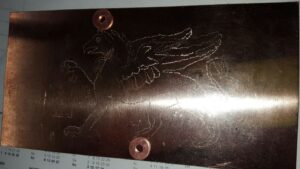
Fig. 12 Plate griffin
After the motifs were worked into the bronze plates, the plates were cut to size, drilled and provisionally fixed to the belt.
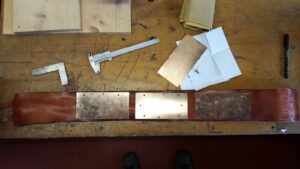
Fig. 13 Riveting diagram
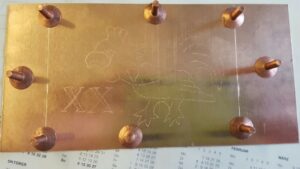
Fig. 14 Riveting pattern
Now a layer of yellow leather was laid over the entire belt, straps and bronze plates and glued over the entire surface. Where the bronze plates are located, the leather was cut out beforehand. Looking back, sewing would have been more authentic. Finally the bronze plates were fixed to the belt with copper rivets. The large rivets have a decorative character in addition to their mechanical function.
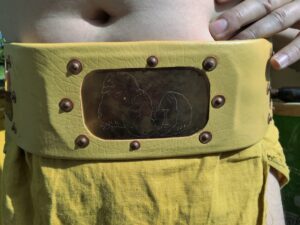
Fig. 15 Belt front
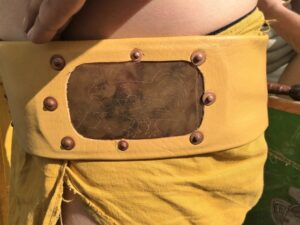
Fig. 16 Belt left
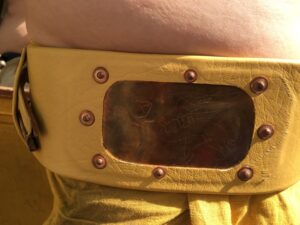
Fig. 17 Belt right
Thus another part fits into the equipment of the gladiator Pullus. The impacts on the side plates, which have been preserved in the meantime, testify, besides the extremely decorative character of this rather narrow belt, also to the not to be despised protective effect in battle.
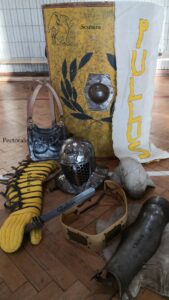
Fig. 18 Pullus‘ equipment
Finally the overall picture with the attempt of a victory pose with raised scutum.

Fig. 19 Operational picture
Meanwhile with over 100 fights I am of course thinking about making a fourth record but it is hard to beat the sign of Nemesis in a gladiatorial context. Therefore I am happy about good ideas.
Valete your Gladiatores Berolinenses
1] Gladiator Romes blody spectacles, Konstantin Nossov, p. 101f ISBN 978-1-84603-472-5
2] Retiary overview www.gladiatorenschule-berlin.de/wp-content/uploads/2020/05/ÜbersichtRetiariusDE.pdf#page=29
3] https://upload.wikimedia.org/wikipedia/commons/c/c1/Cingulum_militare1%2C_Tekija.jpg Gmihail in Wikipedia in Serbian / CC BY-SA 3.0 RS (https://creativecommons.org/licenses/by-sa/3.0/rs/deed.en)
4] Gladiator Looking on death every day, Harald Meller, Valeria Sampaolo, Luigia Meliko, S. 126f ISBN: 978-3-8053-4787-7
5] all used pictures with Creative Comons licence of the Berlin Gladiator School